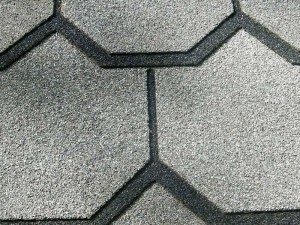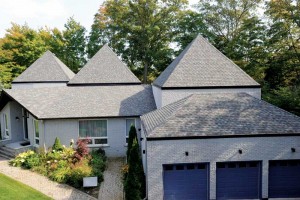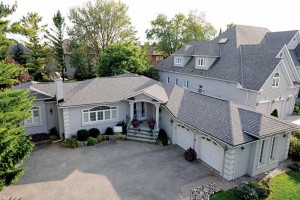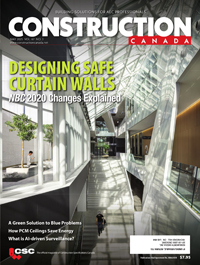Roofing Shingle Warranties: Uncovering common misconceptions

The upfront protection warranty coverage (i.e. the first five to 10 years) has specific limitations when it comes to reimbursement, as seen from this hypothetical example of a manufacturer’s warranty.
In the upfront coverage period, if water leakage occurs and is a result from a manufacturing defect as reflected in the limited warranty coverage, the manufacturer has two options:
(a) Replace or repair, at its expense, the defective shingles using identical or manufacturer shingles. This includes the cost of labour to install these shingles, but it does not cover other expenses such as flashings, vents, metal work, and tear-off and disposal of the shingles replaced.
(b) The building owner will be compensated for the total charges incurred with replacement or repair of the defective shingles with either identical or similar manufacturer shingles, including the cost of labour to install them. However, this compensation does not include other costs and expenses (such as metal work, flashings, vents, and tear-off and disposal of the products replaced), and is in accordance with the manufacturer’s reasonable estimate at the time of the claim, but not exceeding the total cost of the original labour and shingles.
After the upfront protection period has passed, the warranty could stipulate:
Depending on the conditions and limitations listed within…this limited warranty begins after installation is complete and will run for the length of time identified for the particular shingle.
After 10 years, the upfront protection period has passed and the warranty becomes retroactive and depreciates every month from the date of installation:
Coverage may be offered based on the prorated value of the maximum liability per square shown in the information tables. Costs not included are labour, tear-off and disposal of the existing shingles, flashings, metal work, vents, or repair of any other damages.

Figure 1 shows a chart indicative of a warranty used today.
Breakdown of a typical manufacturing warranty
Manufacturer’s prorated warranties can be confusing when calculating what would be left on the warranty and payable to the building owner. Here are a few examples.
Example 1
This example is based on a 25-year prorated warranty, after 18 years. It is March 2030 and a manufacturing defect has led to a leak. Shingles were purchased in March 2012 with a typical 25-year limited warranty, and only 18 years have elapsed since their purchase. The manufacturer’s warranty obligation will be reduced as follows:
180/225 (reduction calculation for the first 180 months)
= 0.80 + 36/600 (reduction figure for balance of period)
= 0.06 for a total of 0.86
The manufacturer’s maximum obligation would be approximately 14 per cent (100 – 86) of the cost of the replacement shingles.
An important piece of the warranty buyers should be aware of is if the 14 per cent paid out by the manufacturer is on the cost of the shingles. Expenses not covered include:
- labour;
- tear-off and disposal of the existing shingles;
- other shingles;
- roof;
- flashings;
- metal work;
- vents; or
- repair of any other damages or expenses incurred or claimed.

“Considering shingle material purchases add up to 15 per cent of the overall price, this is a miniscule amount of what it will cost to fix the roof,” says Meltz. “If you purchased a $6000 roof, your shingles amount to approximately $900 of that overall expense. Under warranty, in the example above, you will receive approximately $126 worth of shingles. Again, this does not cover the removal and disposal of old shingles, underlayments, flashings, ventilation, fasteners, sealants, and labour. With inflation, you are likely to double the original cost of your roof in repairs.”
Example 2
One can apply the same calculation using a 50-year warrantied shingle with 10-year upfront protection. If the original replacement price was $10,000, and the shingles were 20 per cent of that cost, using calculations based on the warranty chart, the shingle reimbursement would be $1107.67 after 12 years. The out-of-pocket expense would be close to $9000 without considering inflation.
Two other common limitations that void the warranty for most manufacturers today involve the contractor.
- Any damage occurring during or after any improper application process, including one that fails to follow the manufacturer’s printed application instructions.
- Any damage arising from any cause other than a manufacturing defect that results in a leak.
The contractor must adhere to the complete set of specifications as written by the manufacturer. This includes:
- proper ventilation;
- correct flashing;
- removal of old shingles (if necessary); and
- use of proper underlayment.
These are the most common factors behind a roof’s demise––not the shingles themselves. Unfortunately, if the contractor does not have his own separate guarantee or warranty on the labour, the building owner is left with the entire expense of a new roof.

Therefore, when building a roof, it is important to research the correct shingle type to use, based on climate, slope of roof, and product warranty (one should read the warranty in its entirety). It is equally important to ensure the hired contractor is certified by the manufacturer.
According to Meltz, a successful roofing project includes:
- the proper specification––to address the problems and upgrades the building requires to bring it up to code and the manufacturer requirements;
- the proper material––finding the quality materials and using a roofing system where all the components work together; and
- the right people––a certified contractor who can provide the owner with a registered warranty that includes all the components and who can install the materials with quality craftsmanship.
There are manufacturers that will stand behind their certified contractors whose warranties are not prorated and will cover labour, material and disposal, workmanship, esthetic flaws, are transferable, and are not just leak warranties. However, not all shingles and warranties are created equal. (Some asphalt shingles are provided with ‘self-sealing tabs,’ with the thought the tabs will ‘self-seal’ in warm weather. In some Atlantic provinces, cases have been found where the tabs have not been fused or the contractor has not properly glued or asphalted the shingles down. It is important to watch out for this).
Jennifer Wanzel has a certificate in digital marketing with the Canadian Marketing Association. She is a digital content and social media writer, and a freelance writer. Wanzel can be contacted via e-mail at jenniferwanzel@rogers.com.







